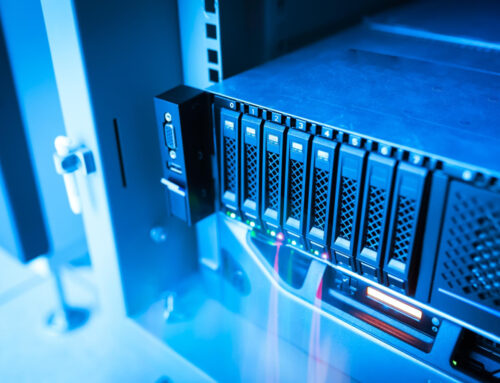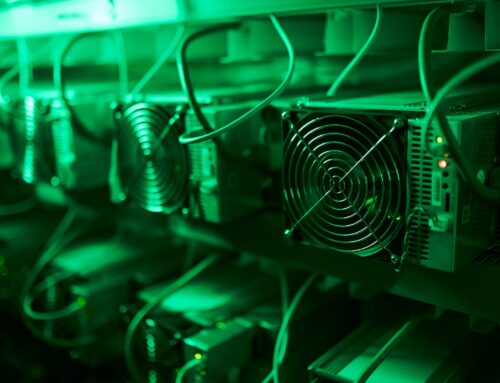As the IT industry continually evolves, the introduction of new technologies brings both opportunities and challenges, particularly in the second-user market. One of the latest advancements causing a significant shift is the arrival of DDR5 memory. For brokers and suppliers like SSI, who specialise in second-user enterprise IT products, the transition to DDR5 presents unique challenges that require careful consideration.
Understanding DDR5 and Its Impact
DDR5, the latest iteration in the series of Double Data Rate (DDR) Synchronous Dynamic Random-Access Memory (SDRAM), represents a substantial leap in memory technology. Compared to its predecessor DDR4, DDR5 offers higher performance, improved power efficiency, and increased bandwidth, which are critical for handling the ever-growing demands of data-intensive applications and modern servers.
As manufacturers shift their focus to DDR5, newer servers are being designed to accommodate this advanced memory technology. While this move is beneficial for future-proofing IT infrastructure, it introduces a complex dynamic in the second-user market.
The Challenges of DDR5 Adoption for Second-User IT Products
- Supply Chain Disruption: As DDR5 becomes the new standard, manufacturers will gradually phase out DDR4 production. This shift can lead to reduced availability of DDR4 components, making it challenging for second-user suppliers to maintain a steady inventory of the older generation RAM. For brokers like SSI, ensuring a consistent supply of DDR4 components will require strategic sourcing and partnerships.
- Market Demand Shift: Enterprises planning to upgrade their IT infrastructure may increasingly seek DDR5-compatible servers and components. However, many businesses still rely on existing DDR4-based systems, particularly those with significant investments in their current infrastructure. SSI will strike a balance between catering to organisations adopting DDR5 and those continuing to support DDR4 environments.
- Pricing Fluctuations: The introduction of DDR5 can lead to price volatility in the market. As DDR4 becomes less available, its prices may rise, which could affect the overall cost of second-user systems. Conversely, DDR5 components might initially be expensive due to lower production volumes and higher demand. Brokers will need to navigate these pricing fluctuations carefully to remain competitive while offering value to customers.
- Compatibility and Upgrade Challenges: For businesses that opt for incremental upgrades, integrating DDR5 memory into their existing infrastructure can be challenging due to compatibility issues. Most current systems are not designed to support DDR5 without significant modifications. SSI will be able to play a crucial role by providing expert guidance on compatibility and offering transitional solutions that bridge the gap between DDR4 and DDR5.
Opportunities in the Second-User Market
While the transition to DDR5 presents challenges, it also opens up several opportunities in the second-user market:
- Continued Demand for DDR4: Despite the shift towards DDR5, there will be continued demand for DDR4 components as many organisations will maintain their existing infrastructure for years to come. SSI will support this by ensuring a robust supply of high-quality second-user DDR4 RAM and related components.
- Specialised Solutions for Hybrid Environments: As businesses navigate the transition period, there is a growing need for hybrid solutions that allow the integration of DDR4 and DDR5 technologies. SSI, as a leader in providing customised solutions, can help organisations upgrade at their own pace, minimising disruption.
- Sustainability and Cost-Effectiveness: The second-user market inherently supports sustainability by extending the life of IT equipment. As companies weigh the cost of upgrading to DDR5, SSI can highlight the environmental and financial benefits of purchasing second-user DDR4 components, aligning with broader corporate sustainability goals.
- Expert Consultancy Services: With the complexities involved in the transition to DDR5, there is an increased need for expert consultancy. SSI will provide in-depth guidance, helping businesses navigate their IT upgrade paths, optimise their infrastructure, and make informed decisions about when and how to adopt DDR5 technology.
Conclusion
The emergence of DDR5 memory marks an important development in enterprise IT, introducing some new challenges for the second-user market. SSI is well-prepared to support its customers during this transition by remaining adaptable and forward-looking. By keeping pace with industry trends and maintaining a flexible inventory, SSI is positioned to meet the varying needs of its customers, whether they are exploring DDR5 technology or looking to maximise the value of their existing DDR4 infrastructure.
SSI’s commitment to providing expert guidance ensures that customers receive tailored advice to help them navigate this changing landscape. This approach helps customers make informed decisions that align with their business objectives. Whether it’s upgrading to DDR5 or optimising current systems, SSI is focused on delivering practical, value-driven solutions. As the market continues to evolve, SSI’s steady and proactive approach ensures that customers are supported throughout the process, helping to turn potential challenges into opportunities for improvement.
The main manufacturers of DDR5 memory include:
1. Samsung: A leading global memory manufacturer, Samsung produces DDR5 memory for a wide range of applications, including servers, desktops, and laptops.
2. SK Hynix: Another major player in the memory industry, SK Hynix produces DDR5 memory and is known for its innovation and high-performance memory products.
3. Micron Technology: Micron is a key memory manufacturer that produces DDR5 modules, focusing on delivering advanced technology solutions for both consumer and enterprise markets.
4. Kingston Technology: Kingston is a well-known brand in the memory market, offering a range of DDR5 modules for different applications, including gaming and high-performance computing.
5. Crucial (a brand of Micron): Crucial is Micron’s consumer brand and offers DDR5 memory targeted at consumers and enthusiasts, particularly for desktops and laptops.
6. Corsair: Known for its high-performance gaming memory, Corsair offers DDR5 modules designed for gaming PCs and enthusiasts.
7. G.Skill: G.Skill is recognised for its high-end memory modules, particularly in the gaming and overclocking communities, and offers a range of DDR5 products.
These companies are at the forefront of DDR5 memory production, catering to various market segments, including consumer, gaming, and enterprise.



